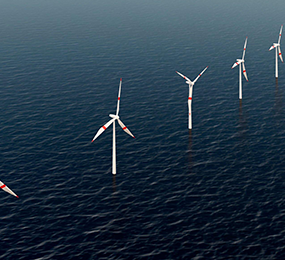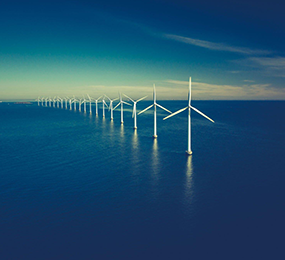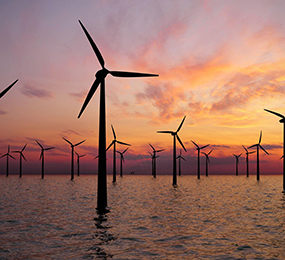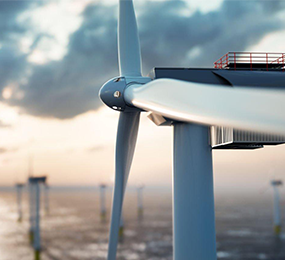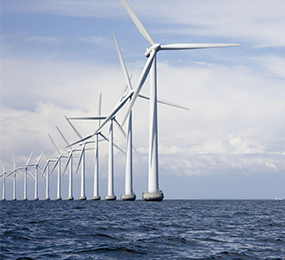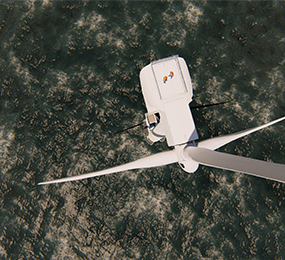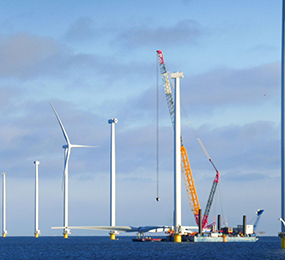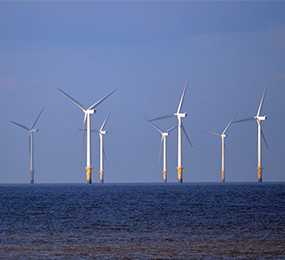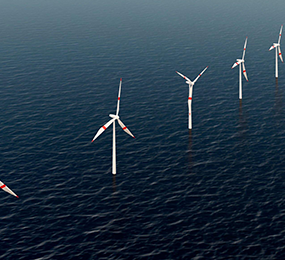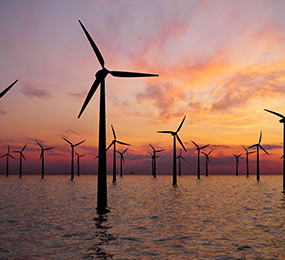Dynamic Cables for Floating Offshore Wind Applications
DYNAMIC CABLE: IMPORTANCE AND CAUSE FOR CONCERN
To export electricity to land, any offshore power producing plant requires a cable network. A static cable installed or buried on the seabed is used by fixed systems such as fixed wind turbines or some tidal turbine systems. The cable in this situation is subject to just minor mechanical loads. However, for floating systems, a link between the floating structure and the main export cable on the seabed is required, which is the dynamic cable, also known as an umbilical.
Owing to floating structural motions, swell, and current, as well as the possibility of wear due to friction or scrape, this component is susceptible to significant mechanical loadings. This is why its design differs from that of a static wire, particularly one with double armor. Because of the enormous voltages (> 66 kV) that run through these cables, as well as the high mechanical stresses, it is a complicated and costly multi-material component. Because no redundancy is planned, its resilience and durability are critical components for a farm's survival.
According to feedback from bottom-fixed wind farms in Northern Europe, 80% of legal remedies are related to faults in offshore wind turbine export cables. Insurers perceive the danger of output loss from a farm to be considerable due to the dynamic nature of cables in floating systems. This can cause investors to be concerned and punish the industry if effective control of this component is not established soon.
THE DIFFICULTY OF DYNAMIC CONFIGURATION
The dynamic cable must be able to sustain the floating structure's maximum offsets under the load of ocean current, swell, and wind. This necessitates the use of an overlength capable of absorbing these changes in distance at the ends. This over-length, which contains buoyancy modules, allows the umbilical to remain far enough from the surface to ensure safe navigation, but also far enough from the bottom to minimize early abrasion damage. The dynamic cable must also endure changes in its surroundings throughout the course of its 20 to 25-year service life, including the development of biofouling, which can triple its weight.
Two joint R&D studies are investigating the impact of this phenomena on the umbilical: one on the thermal effect and the other on the hydromechanical behavior.
IN THE LONG TERM, COUPLED BEHAVIOR
Because of the modest floating structure size, which causes considerable dynamics, but also because of the shallow depth, dynamic cables face mechanical loadings dominated by bending. This is in contrast to oil umbilical’s, which are dominated by mechanical stress exerted by suspended weight at deep depths (> 1000 m). As a result, the dynamic cable of ORE is subjected to considerable and regular bending loadings, as well as severe electrical and thermal loadings. As a result, it is vital to determine if the decoupled loads utilized in current design methodologies are sufficient, as well as to improve our understanding of the specific deterioration modes generated by this coupling.
IN-SERVICE MONITORING TECHNOLOGY STRATEGIES AND SOLUTIONS
The dynamic cable is a complicated item to examine due to the multi-physical interaction and the employment of many distinct materials. Indeed, the heavy steel armor restricts external measures by acting as an almost impenetrable barrier. However, considering the stakes involved with this component, it is critical to design a true monitoring plan as well as technology solutions to assure its in-service monitoring. Today, electrical functioning testing are the primary focus of interrogation tactics. The detection of secondary degradations may allow us to avoid and respond to full functional loss before it occurs. If the usage of internal optical fiber in the umbilical is already being investigated, an effort should be made to design unique sensors that can satisfy the demand, as degradation mechanisms are not yet totally understood.
Visit our website to know more: https://bit.ly/3WI81v2
For more information and group participation, contact us: [email protected]
Leadvent Group - Industry Leading Events for Business Leaders!
www.leadventgrp.com| [email protected]


